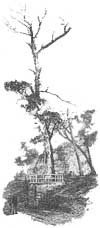SOME CONCLUDING REFLECTIONS

Though the past is “a foreign country” where they “do things differently”, as the novelist H. P. Hartley told us in The Go-Between, the fact remains that we view it through the lens of the present. And, in doing so, we are inclined to interpret it in the light of contemporary values and concerns. In this brief look at the memorials to Blaxland, Lawson and Wentworth we have seen how, in the process of creating historical meaning through a local attachment to place, the explorers have at times been seen as:
- an expression of a perceived tradition. By linking the three explorers with the celebration of Empire Day or the dedication of war memorials, for example, they are placed within a tradition that implies a history in which values and attitudes are unchanging.
- an embodiment of the patriotic ideal, whether that be in the context of the British Empire or Australian nationalism.
- models of the 'work ethic', providing children (and adults) with an example of the courage, determination and hard work that lead to achievement and success.
- a stimulant to commercial gain through the attraction of tourists.
I don't think so. For, while their invisibility during the Bicentenary is puzzling and the vandalising of the sculptured heads at Mount York suggests a degree of popular disrespect that would shock earlier generations, the “dauntless three” are so deeply a part of the Blue Mountains psyche that my money is definitely on their continued survival.
This is not an age for erecting obelisks and pavilions, but 'heritage' has become a major cause celebre and the slow but relentless journey towards republicanism has stimulated a renewed Australian nationalism. Both these developments, and the growth in genealogical research, have encouraged interest in and reinterpretation of our past.
It will be interesting to see how the “dauntless three” are celebrated in 2013. One thing, however, is certain. The explorers honoured on that date will not be the Blaxland, Lawson & Wentworth who were honoured in 1913. Rather, they will have been re-invented to suit the outlook of a nation at the start of a new millennium and, in all probability, of a new republic.
© John Low 2001
